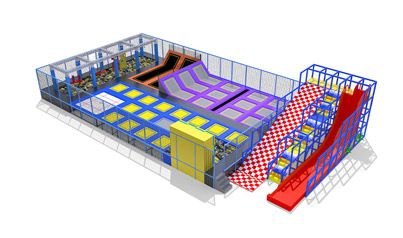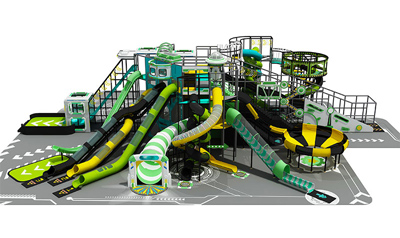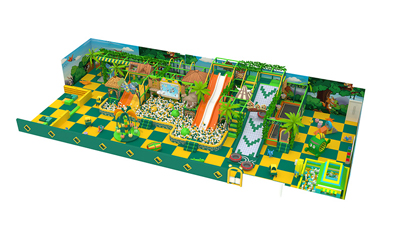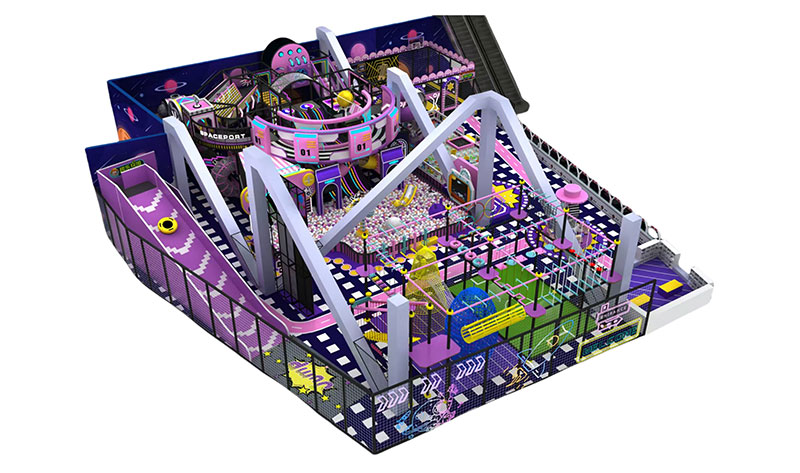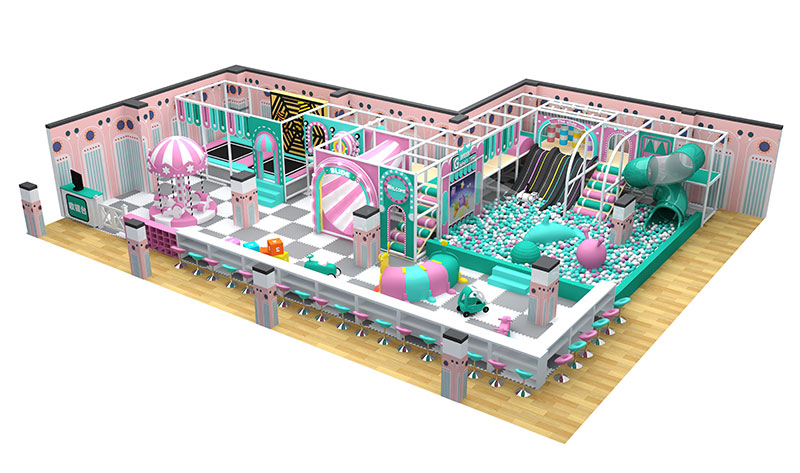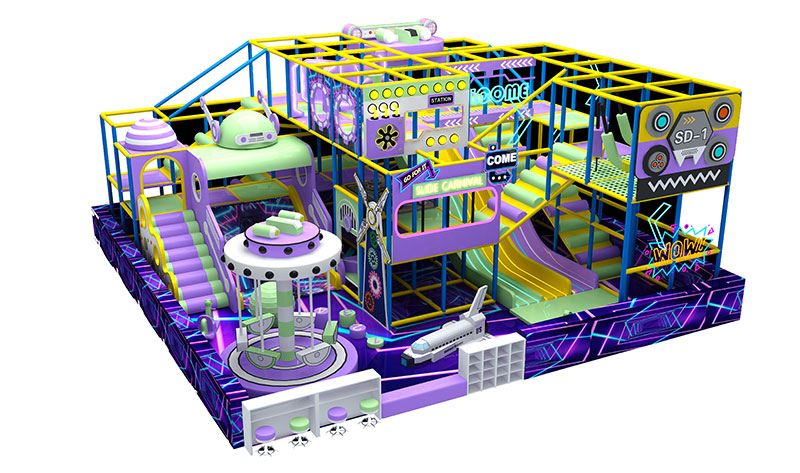Trampoline parks have become a popular destination for fitness enthusiasts, families, and thrill-seekers alike. To ensure a safe and enjoyable experience, indoor commercial trampoline facilities must be equipped with high-quality, durable, and safety-certified equipment. In this article, we’ll explore the essential indoor commercial trampoline equipment needed to operate a successful trampoline park.
I. Trampoline Mats and Frames
The foundation of any trampoline park is the trampoline mats and frames. Commercial-grade trampolines must be built to withstand heavy use while providing optimal bounce.
High-Performance Jumping Mats – Made from durable polypropylene or Permatron® material for long-lasting elasticity.
Galvanized Steel Frames – Rust-resistant and sturdy to support frequent jumping.
Spring or Springless Systems – Traditional spring-based trampolines or modern springless (bungee cord) designs for a smoother bounce.
II. Safety Padding and Enclosures
Safety is paramount in trampoline parks. Proper padding and enclosures minimize injury risks.
Foam Padding– Thick, high-density foam covers frames and edges to prevent impact injuries.
Safety Nets – Enclosures around trampolines to keep jumpers from falling off.
Wall Padding – Protective padding on surrounding walls for added safety.
III. Foam Pits and Landing Zones
Foam pits are a favorite feature in trampoline parks, allowing guests to practice flips and tricks safely.
High-Quality Foam Cubes – Soft, durable foam blocks that cushion landings.
Pit Liners – Heavy-duty vinyl or fabric liners to contain foam cubes.
Access Ramps – Allows easy entry and exit from foam pits.
IV. Dodgeball and Basketball Courts
Interactive trampoline games enhance the experience and attract more visitors.
Dodgeball Trampoline Courts – Designated areas with trampolines for high-energy dodgeball games.
Slam Dunk Basketball Hoops – Adjustable hoops for trampoline-assisted dunks.
Boundary Markings - Clearly defined court lines for organized play.
V. Ninja Warrior and Obstacle Courses
Adding ninja warrior-style challenges can diversify attractions and appeal to fitness-focused guests.
Warp Walls – Angled trampoline walls for climbing challenges.
Balance Beams & Slacklines – Test agility and coordination.
Cargo Nets & Rope Swings – Adventure elements for an extra thrill.
VI. Climbing Walls and Vertical Challenges
Trampoline-assisted climbing walls provide a unique experience.
Clip ‘n Climb Walls – Auto-belay systems for safe climbing.
Trampoline Launch Walls – Jumping trampolines to reach climbing holds.
VII. Toddler and Kids’ Zones
A dedicated area for younger children ensures a family-friendly environment.
Mini Trampolines – Lower-height trampolines for small kids.
Soft Play Structures – Ball pits, slides, and crawl tunnels.
VIII. Spectator Areas and Seating
Comfortable seating for parents and non-jumpers improves guest satisfaction.
Viewing Decks – Elevated platforms for watching jumpers.
Lounge Areas– Seating with charging stations and Wi-Fi.
IX. Sound Systems and Lighting
A vibrant atmosphere enhances the overall experience.
LED Lighting – Color-changing lights for a dynamic look.
Sound Systems – Play energetic music to keep the mood upbeat.
X. Maintenance and Safety Inspections
Regular upkeep ensures equipment remains in top condition.
Daily Safety Checks – Inspect mats, padding, and frames for wear.
Professional Servicing – Schedule routine maintenance with trampoline suppliers.
Conclusion
Investing in high-quality indoor commercial trampoline equipment is crucial for running a safe, fun, and profitable trampoline park. From trampoline mats and safety nets to foam pits and ninja courses, each component plays a vital role in attracting customers and ensuring repeat visits.
By prioritizing durability, safety, and entertainment value, trampoline park owners can create an unforgettable experience for guests of all ages.


